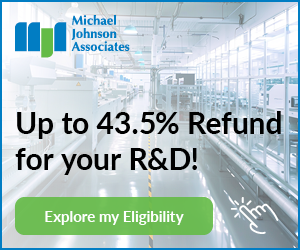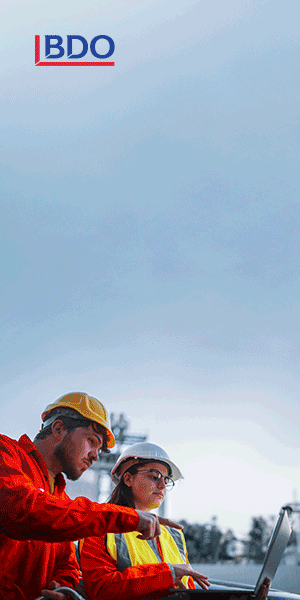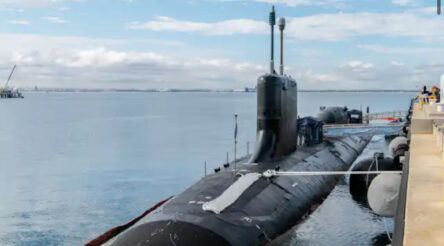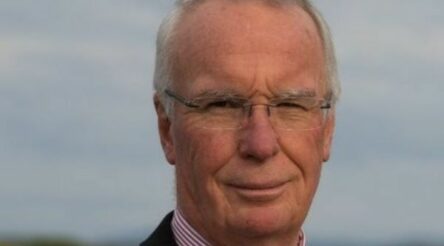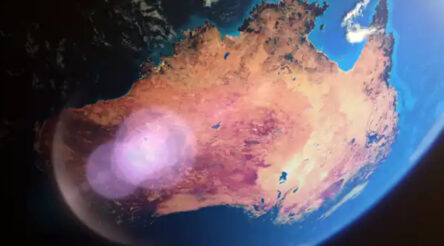Towards 3% R&D – Reach for the Moon to innovate by Xavier Orr

@AuManufacturing turns today in our editorial series – Towards 3% R&D – Turbocharging Australia’s Innovation Effort – to one of the bright sparks in the innovation scene – the development of a research-based space industry. By Xavier Orr.
Australia’s space sector has skyrocketed in the past two decades.
As of 2008, Australia was the only Organisation for Economic Co-operation and Development (OECD) country other than Iceland to not own a space agency.
Fast forward 16 years, the country not only formed the Australian Space Agency, but also funded a number of projects including the SmartSat Cooperative Research Centre, the Modern Manufacturing Initiative, as well as supporting NASA’s Moon to Mars Initiative.
In late 2023, Australia also signed an agreement that would allow US companies to carry out space launch activities in Australian spaceports.
Today, Australia’s space sector is experiencing an annual growth of more than seven percent – outpacing GDP – and is expected to triple in size to $12 billion by 2030.
The figures spell out an extraordinary achievement.
In a small amount of time, Australia has portrayed itself as a rising star in the space sector, although there is still a long way to go before becoming a global leader.
This requires focus on two key areas: continuing with R&D efforts in space, and developing a workforce with space-related skills.
Doing so will ensure the robust development of Australia’s sovereign manufacturing capability and competitiveness of the domestic space economy.
Bolstering space R&D
The importance of high-quality R&D cannot be overstated. It enables the generation and expansion of new knowledge, which can be turned into practical products and solutions for the betterment of society.
A prime example of this is the development and launch of CubeSats in 2021, known as the M2 mission, by UNSW Canberra Space and the RAAF.
The small satellites greatly enhanced Australia’s space situational awareness through data captured in space, indicating the significant impact that targeted investment in the research sector can have on building space capabilities.
In a more recent case, the Australian Space Agency awarded my company, Advanced Navigation a $5.2 million Moon to Mars Initiative: Demonstrator Mission Grant, to speed up development of a space-qualified sensor called LUNA (Laser measurement Unit for Navigational Aid).
Backed by more than a decade of research at the Australian National University, LUNA improves spacecraft’s reliability of autonomous landing manoeuvres and navigation on the Moon.
It is set to be demonstrated on board Intuitive Machines’ lunar landers in 2025, as part of NASA’s ongoing Commercial Lunar Payload Services (CLPS) programme.
These are just a few examples of taking the best of research and turning it into commercial, practical solutions.
@AuManufacturing is publishing contributions from readers for our series – Towards 3% R&D – turbocharging our national innovation effort – over a, month and in an e-Book, and we urge you to contribute. Call Peter Roberts, 0419 140679 or write to [email protected].
According to The Space Economy in Figures published by OECD, among the world’s 10% most cited publications in space and planetary science, Australian publications have the highest percentage.
Recognising the world-class capabilities of Australia’s space R&D and corroborating its base will open up opportunities for more international collaboration.
Filling the gap in skills shortage
There is currently an imbalance between the skills capability and shortages across the Australian space industry.
SmartSat’s 2021 Australian Space Industry Skills Gap Analysis indicates that out of the 319 identified space-related skills, all but nine are experiencing some level of shortage.
This suggests an industry poised for growth that struggles to keep up with its skills demand, which can undermine Australia’s manufacturing self-sufficiency and economic competitiveness.
The silver lining is that the Australian Space Agency aims to create another 20,000 jobs to the domestic space workforce by 2030.
Moving the dial in Australia’s space sector
In a new era of space exploration, unlocking the space economy requires collaborations that can turn empirical scientific knowledge into real-world solutions.
In March, Space Machines Company successfully launched Australia’s largest-ever private satellite, an Orbital Servicing Vehicle named ‘Optimus’, to provide life-extension services, inspections and assistance to existing space infrastructure and satellites on-orbit.
Optimus is equipped with Advanced Navigation’s Boreas X90 inertial navigation system, allowing it to navigate and manoeuvre within and between Earth orbits with high precision.
The collaboration marks a major milestone for Australia’s growing sovereign space capabilities.
To realise new opportunities, Australia must continue building a cohesive and agile space R&D sector to engage in science-to-industry partnerships, as well as develop a domestic workforce with the necessary space-related skills. A range of economic, technological and social benefits will ensue from this.
There will be an increasing number of jobs, industry collaborations, and innovation-led technology sprouting from Australian soil.
It will lead to scientific advances that benefit life on Earth, including Earth observation, weather forecasting, climate monitoring, communication, navigation, health and medicine, among others.
Most critically, Australia will have the self-sufficiency and sovereign capability to lead a space programme that thrives on home-grown skills.
Xavier Orr studied mechatronics engineering & computer science, robotics and artificial intelligence and started his first company in high school that built and sold PCs. He worked in R&D designing vehicle autopiloting before founding his own company Advanced Navigation to commercialise his university thesis on AI based inertial navigation. Xavier is CEO and co-founder of Advanced Navigation.
This series is brought to you through the support of our principal sponsor, public accounting, tax, consulting and business advisory BDO, and R&D tax incentive consultancy Michael Johnson Associates.
Picture: Xavier Orr
Topics Advanced Navigation Analysis and Commentary Artificial intelligence Australian National University Australian Space Agency Commercial Lunar Payload Services computer science CubeSats innovation Intuitive Machines LUNA Manufacturing News mechatronics engineering Modern Manufacturing Initiative Moon to Mars NASA OECD Optimus R&D RAAF robotics SmartSat Cooperative Research Centre space Space Machines Company Technology towardsthreepercent UNSW Canberra Space Xavier Orr
@aumanufacturing Sections
Analysis and Commentary Awards Defence Manufacturing News Podcast Technology Videos






